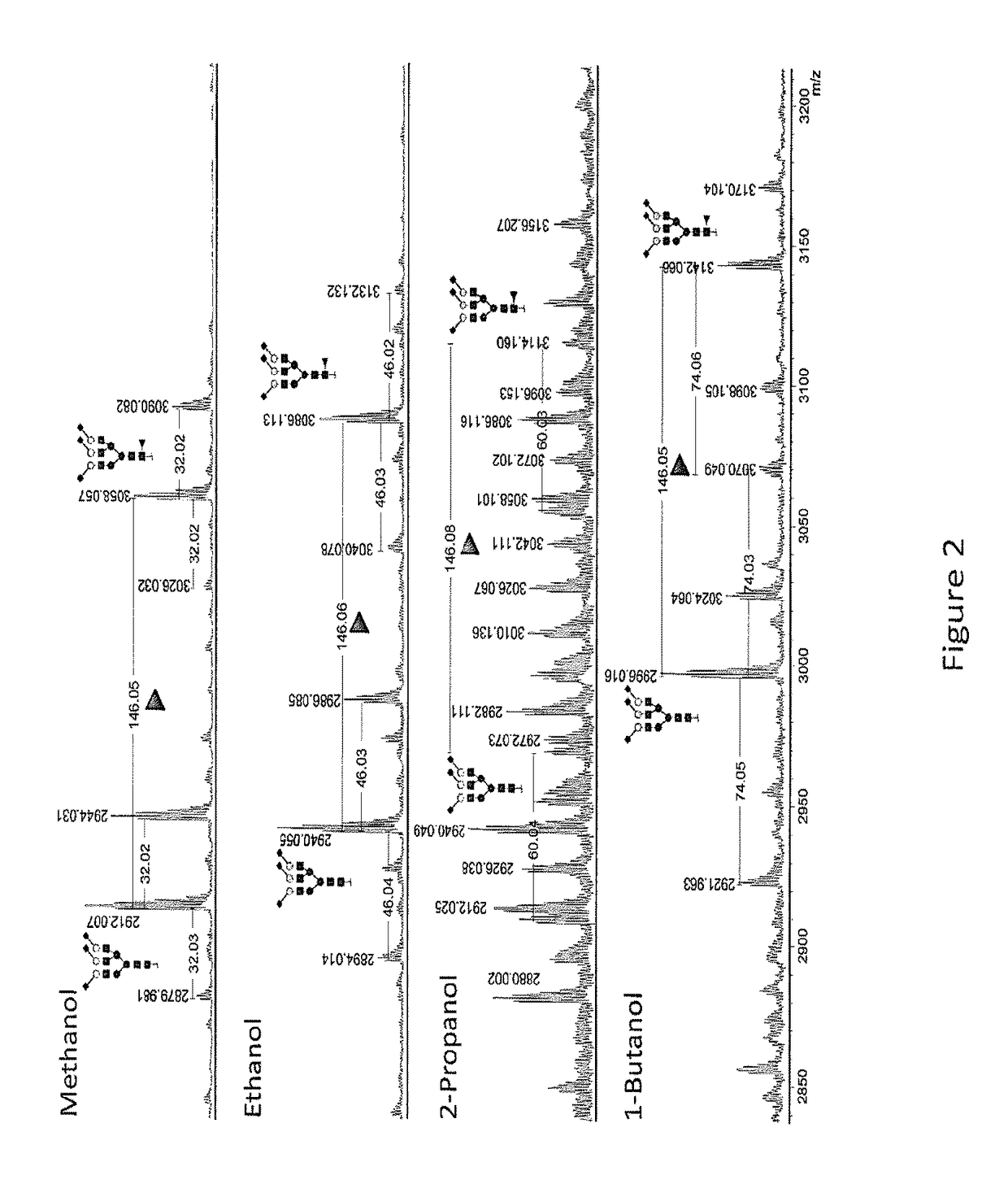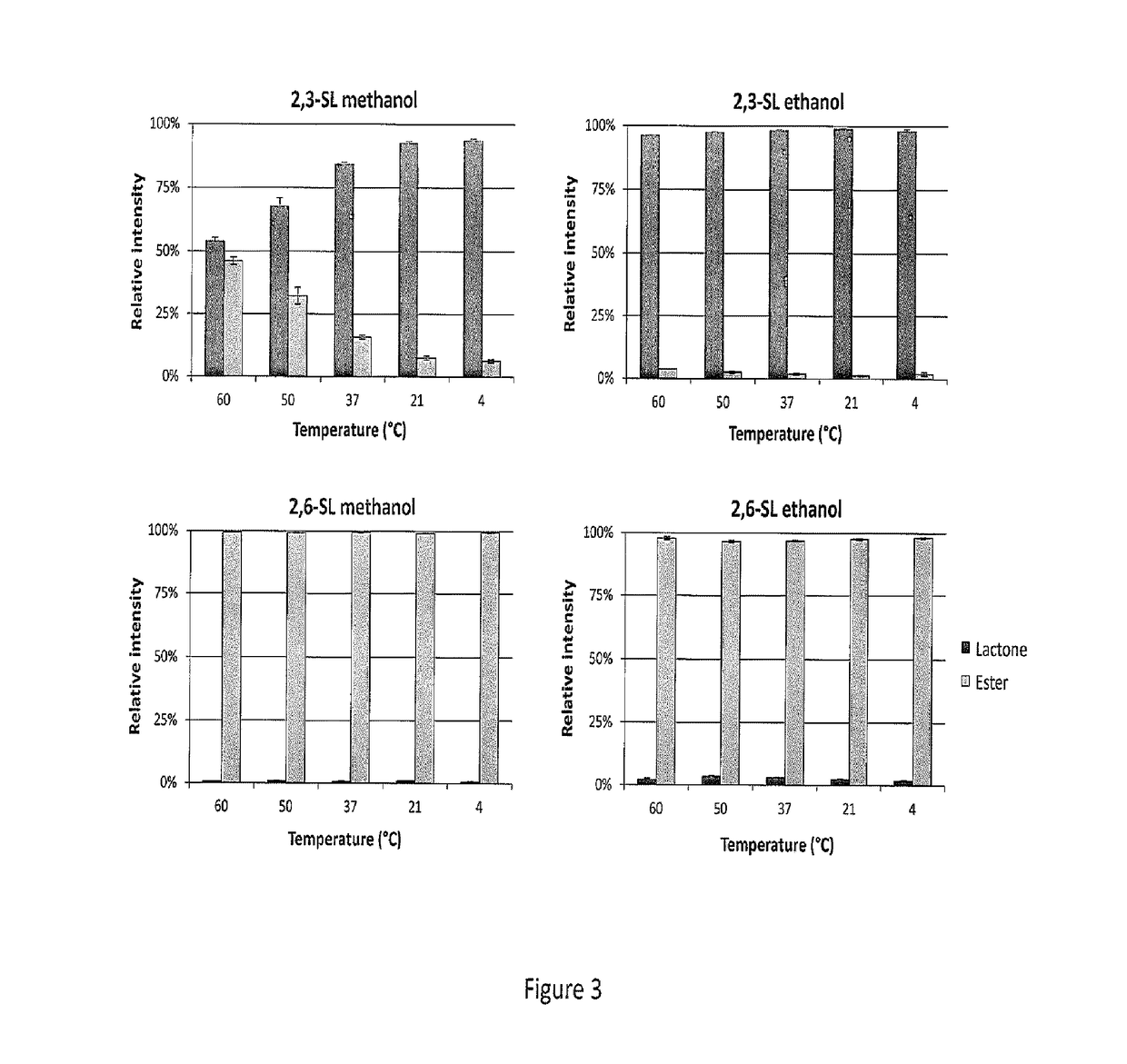Glycan analysis
a glycan and analysis technology, applied in the field of glycan analysis, can solve the problems of loss of residues, affecting activity, stability and immunogenicity, and not showing complete linkage-specificity,
- Summary
- Abstract
- Description
- Claims
- Application Information
AI Technical Summary
Benefits of technology
Problems solved by technology
Method used
Image
Examples
Embodiment Construction
[0065]The present invention will now be further described with reference to the figures which show.
[0066]FIG. 1 shows a reflectron-positive mode (RP) MALDI-TOF-MS spectrum after methyl esterification of PNGase F-released plasma N-glycome. The samples were reacted using a variety of activator / reagent combinations and acidic conditions in methanol. Shown here is the most abundant disialylated N-glycan present in such a spectrum. The mass of 2273.804 Da corresponds to a fully methyl esterified reaction product [M+Na]+, whereas masses of 2281.770 Da and 2289.736 Da correspond to species lacking one or two methyl groups with resulting sodium salt formation ([M-H+2Na]+ and [M-2H+3Na]+). Reaction products at 2258.804 Da indicate carbonyl amidation, whereas 2241.777 Da indicates a lactonised reaction product. EDC+HOBt was selected as most promising on basis of modification completeness and lack of side reactions, without the need for acid. Symbols are used throughout the document to indicat...
PUM
| Property | Measurement | Unit |
|---|---|---|
| temperatures | aaaaa | aaaaa |
| temperatures | aaaaa | aaaaa |
| v/v | aaaaa | aaaaa |
Abstract
Description
Claims
Application Information
 Login to View More
Login to View More - R&D
- Intellectual Property
- Life Sciences
- Materials
- Tech Scout
- Unparalleled Data Quality
- Higher Quality Content
- 60% Fewer Hallucinations
Browse by: Latest US Patents, China's latest patents, Technical Efficacy Thesaurus, Application Domain, Technology Topic, Popular Technical Reports.
© 2025 PatSnap. All rights reserved.Legal|Privacy policy|Modern Slavery Act Transparency Statement|Sitemap|About US| Contact US: help@patsnap.com



